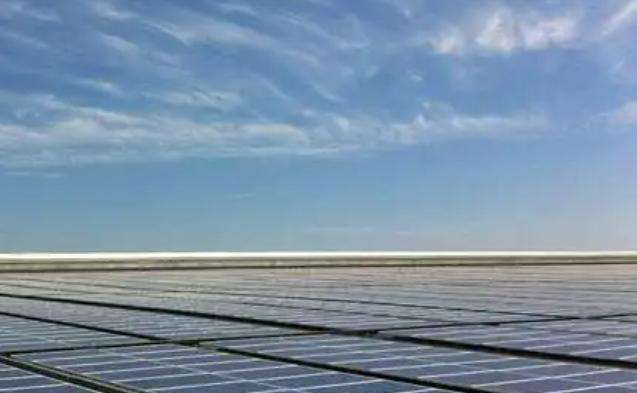What are the causes of water pollution?
Water pollutants come from many human activities. Industrial pollutants can flow through factory effluent pipes or through underground pipes and storage tanks. Contaminated water may also come from mines in which water leaches from mineral rocks, or may have been contaminated by chemicals used to process the ore. Much of the water pollution in cities and other residential areas comes from traces of household chemicals mixed in the drains. Sometimes factories discharge pollutants into the city's sewer system, causing an increase in various pollutants in urban areas. Like farmland. Pollutants from agricultural sources such as pastures, feedlots and ranches include animal manure, proagricultural chemical ducts and sediments from corrosion processes.
Although the ocean is vast, it is not immune to pollution. Pollutants flow into the sea from nearby coasts, ships and offshore oil platforms. Sewage and food discharged from ships sailing on the high seas cause little harm, but plastic products washed up on deck can entangle and kill birds or marine animals. If swallowed, these animals can suffocate, have their digestive tract blocked, and even die.
Oil spills often occur due to accidents, such as the 1992 Exxon Valdez crash in Alaska. Routine and intentional spills can also release crude oil into the ocean. Offshore oil platforms also generate oil spills. The world's largest oil spill was caused by war. During the Gol WarIn 1991, Iraqi forces destroyed eight oil tankers and land terminals in Kuwait, letting a record nine escape. 1 billion liters (240 million gallons) of crude oil. Crude oil strips the feathers and fur of birds and marine mammals of their natural waterproofing abilities, causing the animals to drown or die. Additionally, these animals can become ill or poisoned after ingesting crude oil.
Water pollution can also result from other types of pollution. For example, sulfur dioxide from power plants first pollutes the air. Polluted air mixes with moisture in the atmosphere to produce suspended sulfuric acid, which falls to the surface as acid rain. Acid rain can then flow into streams or lakes, becoming a form of water pollution that threatens or even destroys wildlife. Likewise, landfills cant cause water pollution if rainwater filtered through waste absorbs toxins before seeping into the ground and contaminating groundwater sources.
Contaminants encounter natural water sources in places where we can easily find them. This location is known as a point source of pollution, such as a sewage pipe. Unrepaired sources of pollution are more difficult to detect. Most agricultural pollution is irregular pollution.
Water pollutants come from many human activities. Industrial pollutants can flow through factory effluent pipes or through underground pipes and storage tanks. Contaminated water may also come from mines in which water flows through leaching of mineral rocks, or may have been contaminated by chemicals used to treat the minI will. Much of the water pollution in cities and other residential areas comes from traces of household chemicals mixed in the drains. Sometimes factories discharge pollutants into the city's sewer system, causing an increase in various pollutants in urban areas. From such as farmland. Pollutants from agricultural sources such as pastures, feedlots, and ranches include animal manure, agricultural chemicals, and sediment from corrosion processes.
Although the ocean is vast, it is not immune to pollution. Pollutants flow into the sea from nearby coasts, ships and offshore oil platforms. Sewage and food discharged from ships sailing on the high seas cause little harm, but plastic products washed up on deck can entangle and kill birds or marine animals. SIf swallowed, these animals can suffocate, have their digestive tract blocked and even die.
Oil spills often occur due to accidents, such as the 1992 Exxon Valdez crash in Alaska. Routine and intentional spills can also release crude oil into the ocean. Offshore oil platforms also generate oil spills. The world's largest oil spill was caused by war. During the 1991 Gulf War, Iraqi forces destroyed eight oil tankers and land terminals in Kuwait, letting a record nine escape. 1 billion liters (240 million gallons) of crude oil. Crude oil strips the feathers and fur of birds and marine mammals of their natural waterproofing abilities, causing the animals to drown or die. Additionally, these animals can become ill or poisoned after ingesting crude oil.
The pWater pollution can also result from other types of pollution. For example, sulfur dioxide from power plants first pollutes the air. Polluted air mixes with moisture in the atmosphere to produce suspended sulfuric acid, which falls to the surface as acid rain. Acid rain can then flow into streams or lakes, becoming a form of water pollution that threatens or even destroys wildlife. Similarly, landfills can cause water pollution if rainwater filtered through the waste absorbs toxins before seeping into the ground and contaminating groundwater sources.
Contaminants encounter natural water sources in places where we can easily find them. This location is known as a point source of pollution, such as a sewage pipe. Unrepaired sources of pollution are more difficult to detect. The PLMost agricultural pollution is irregular pollution.














